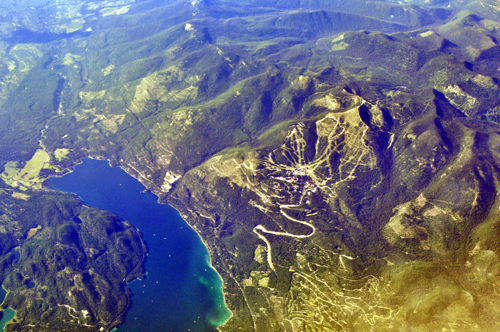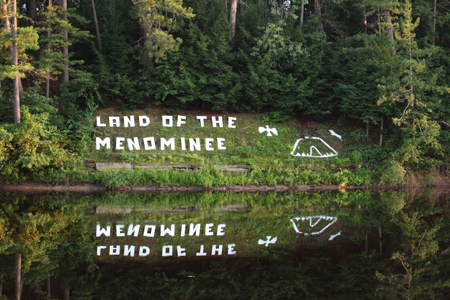The Resilience Dialogues program provides resources and expertise to help communities build individualized plans for resilience in the face of climate change.
Climate change is global, but its effects are felt locally. Although many communities try to plan for anticipated changes and want strategies for bouncing back when disasters occur, they simply don’t have the level of technical expertise that such planning can require. Also, what works in one place may not work somewhere else, further compounding the challenge.
The Resilience Dialogues project aims to make it easier for communities to reduce their climate-related risks and build community resilience. The project does this by connecting community stakeholders with climate experts through online facilitated dialogues. The project, which is comanaged by the U.S. Global Change Research Program and the American Geophysical Union’s Thriving Earth Exchange, launched in late 2015 with a pilot phase that included five communities. Building on the success of those dialogues, 10 more communities held dialogues during the first half of 2017.
The facilitated online dialogues have been useful to a variety of groups, including local governments, county managers, urban planners, community organizations, private sector stakeholders, and public health professionals. Communities that participated in the dialogues say they came away with new knowledge, useful connections, and practical next steps for decreasing their vulnerability to climate change. Each community received a final report summarizing key vulnerabilities as well as opportunities and resources for climate resilience planning that were identified during the discussions. Here are a few examples of communities that have benefited from Resilience Dialogues.
Florida City Plans for Rising Sea Levels
Projections indicate that sea levels around Hallandale Beach, Fla., will rise more than 3 feet (0.91 meters) over the next 40 to 80 years. This anticipated increase will leave the city vulnerable to beach erosion and flooding, as well as saltwater intrusion that could contaminate its drinking water supply. Community leaders applied and were selected to participate in the Resilience Dialogues so they could better understand these potential risks and find ways to communicate with community residents and stakeholders about these risks.
“The dialogues captured an incredible amount of information in a relatively short amount of time,” said Fassler. “With the currently available staff time and resources, the city could never have compiled the list of communication, visualization, implementation, planning, networking, education, and outreach tools included in the final summary document.”
“The dialogues served as an incredible networking opportunity,” said Fassler. “City staff who participated in the process can now reach out to experts from the county, region, private or nonprofit sectors, and federal government for guidance.”
Fassler recommends that cities thinking about taking part in a future Resilience Dialogue identify a team of dedicated, interdepartmental staff members who want to be a part of a learning experience. “Team members do not necessarily need an in-depth understanding of sustainability or resilience because a large part of the dialogues centered upon establishing an introductory level of understanding of key concepts. However, they should be willing to expand their vision beyond the scope of their daily activities and be open minded to breaking down potential silos that exist in routine government work,” Fassler said.
Montana Town Seeks to Safeguard Recreation and Tourism
Whitefish, Mont., located just outside of Glacier National Park, depends on summer visitors to the park and winter skiers to support its economy. Community members, including Steve Thompson, chairman of the public-private partnership Climate Smart Glacier Country, are concerned about what climate change will mean for their community and tourism. They are already experiencing some warmer winters that affect ski conditions, and smoke from wildfires has put a damper on outdoor activities and tourism in the summer.

Members of the community are also concerned about protecting the area’s clean water and fisheries. Last year, low water levels and high water temperatures in another part of the state led to a parasite outbreak that killed thousands of fish and shut down the Yellowstone River to all recreational use. Similar conditions are starting to occur in some of the Whitefish area’s rivers, and residents are becoming anxious.
“We have very little capacity beyond volunteers, and we thought that the Resilience Dialogues would bring some outside perspective and expertise,” said Thompson, the community lead for the dialogues. “However, the dialogues did more than that. They provided a structured format that allowed community representatives from Whitefish and Glacier National Park to have some of our first discussions about preparing for climate change—conversations that we’ve been wanting to have for a long time.”
Wisconsin Tribe Seeks to Protect Natural Resources
Since the 1850s, the Menominee Indian Tribe of Wisconsin has been managing 235,000 acres (about 95,000 hectares) of forest by drawing upon both contemporary forestry science and traditional tribal knowledge. Today, its community members are concerned about how climate change might affect the forest—one of the biggest sources of employment on the Menominee reservation—and the tribe’s other natural resources.

Gregory J. Gauthier Jr. of the College of Menominee Nation’s Sustainable Development Institute (SDI) was the team lead for the Menominee Resilience Dialogues. SDI has been working on climate change research that incorporates numerous initiatives, including tapping traditional knowledge underlying the Menominee Tribe’s forest management practices. Gauthier, who came to SDI as part of the AmeriCorps VISTA Tribal Resilience program, saw the dialogues as an opportunity to bring together the Menominee Tribe, SDI, and community members, who all want to increase community resilience to climate change.
“Throughout the Resilience Dialogues process, discussions about important climate-related vulnerabilities centered on the reservation’s natural resources,” said Gauthier. “We also talked about how climate changes could affect the landscape and how we can be better equipped to handle those changes.”
Gauthier pointed out the importance of the framing step that starts off the Resilience Dialogues process. “This step gives a sense of place to the subject matter experts so they have an idea of how to proceed with that community,” he said. “For the Menominee community, this emphasized the historical importance of the forest and land that the Menominee occupy. Without that understanding, there might have been comments or conversations that community members would not have liked.”
Editor’s Note: AGU executive director and CEO Chris McEntee focuses on the Resilience Dialogues in an 11 July From the Prow blog post. She discusses how partnerships with federal and nongovernmental collaborators are critical to the success of the program to help diverse communities with climate adaptation and resilience planning.





